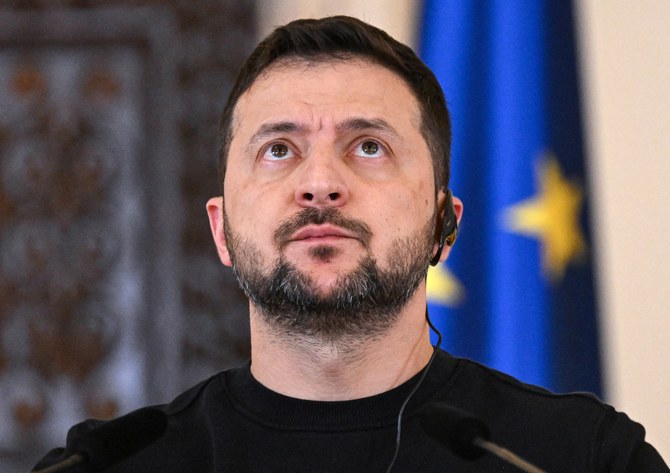Mohamed Chebaro
Russia is watching the unfolding war in Gaza closely as Western leaders rush to support Israel. The attention being paid to Israel and Gaza, amid growing fears the conflict could inflame the whole region, makes a welcome distraction from the stagnating front lines of Ukraine. After 21 months of fighting, Western resolve to not allow Russia to “win” is showing signs of fatigue, especially in the US, where Republicans are playing politics to undermine the Washington administration’s efforts to hold Russia to account.
The question is not whether the Israeli war on Hamas will break the coalition supporting Ukraine, but whether the Gaza conflict will remind everyone that a crisis left unsolved rarely fades away, but generally remerges – and at times and places not included in the short-term agendas of democratically elected Western governments.
Even before the Oct. 7 Hamas attacks that left more than 1,400 Israeli civilians and military personnel dead, and at least 239 people taken hostage, Prime Minister Benjamin Netanyahu and successive Israeli governments were wrong to will the crisis to disappear. Its reemergence has caused an existential threat to Israel not seen in its more than 70 years as a state.
The above could, on the one hand, strengthen Ukrainian President Volodymyr Zelensky’s unwillingness to seek peace on Russia’s terms, as in his mind a settlement is only a recipe for it to remerge and explode in the face of his people. On the other hand, it shows how vying for peace regardless of who is right and who wrong should remain key, even while Russia still occupies 20 percent of Ukrainian territories. Addressing the US Congress during his recent US visit, Zelensky described the conflict in his country as a war of wills. He has often voiced fears that if Russia is not stopped in Ukraine, it could result in wars elsewhere. Zelensky’s thinking is that “a third world war could start in Ukraine, continue in Israel, and move on from there to Asia, and then explode somewhere else.”
In Congress this week, a joint $106 billion aid bundle proposed by President Joe Biden to fund plans for Ukraine, Israel, and US border security is unlikely to pass, with pro-Trump Republicans continuing to pressure the Biden administration at Ukraine’s expense. The US has spent more than $77 billion supporting Ukraine since the Russian invasion on February 24 last year, according to the Council on Foreign Relations, and Biden wants Congress to agree to $60 billion more. The EU has spent $86.7 billion since the beginning of the war.
But similar challenges await Ukraine on its European front, as Hungarian Prime Minister Viktor Orban, who recently met the Chinese and Russian leaders on the fringes of a conference in China, is trying to oppose a $53 billion European aid package for Ukraine that needs a unanimous vote in December as part of the EU budget for 2023-2027. Meanwhile, as Ukraine’s allies waver, Russia is intensifying its operations. Although the Ukrainians have maintained the momentum of their counter-offensive, Russian assaults are becoming more persistent in various sectors. Any disruption to supplies and or commitment on the part of Western powers could be costly and threaten a hard-earned tactical edge. Fearing the worst, Kiev has been ramping up its own weapons production and developing its own drones. This in addition to effectively deploying the newly supplied US Army Tactical Missile Systems, and the UK and France’s Storm Shadow long-range missiles, which have been damaging Russian supply lines, and command and control assets.
However, the worry for Ukraine is that its biggest ally’s hesitance regarding the conflict could erode the national morale. This war has cost the allies money and hardware, says Zelensky, but it has cost Ukraine lives. And keeping up the flow of Ukrainian troops after more than 87 weeks of fighting has not been easy, with the average fighting age creeping above 40. Although Ukraine keeps its losses secret, according to US and EU sources, fatality rates on both sides have risen well above 100,000. Gaza is not Ukraine, and Ukraine is not Gaza. But volatility caused by both conflicts has stifled diplomacy, and made the global conflict environment messier than ever. Though it would be difficult for the US and EU to completely abandon their commitment to Ukraine, it seems Kyiv has to concede that the Middle East crisis has drawn attention away from its own existential war, forcing it to operate with reduced aid and visibility if it is unwilling to “freeze” the conflict now and fight another day.







